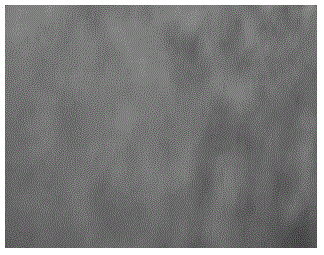Heat-resistant neodymium iron boron material and preparation method thereof
A neodymium-iron-boron and heat-resistant technology, which is applied in the field of heat-resistant neodymium-iron-boron materials and preparation, can solve the problem of low use temperature of materials, and achieve the effects of improving heat resistance, flexible composition ratio, and high social value.
- Summary
- Abstract
- Description
- Claims
- Application Information
AI Technical Summary
Problems solved by technology
Method used
Image
Examples
Embodiment 1
[0029] The preparation method of heat-resistant NdFeB material of the present invention, the concrete steps of this method are as follows:
[0030] 1) Preparation of praseodymium neodymium scandium alloy:
[0031] The praseodymium-neodymium waste material is mixed in hydrochloric acid with a mass concentration of 25%, and the mass ratio of the praseodymium-neodymium waste material and hydrochloric acid is 1: 2.0; then oxalic acid is added into the hydrochloric acid mixed solution and stirred evenly, and the weight ratio of the oxalic acid and the hydrochloric acid mixed solution is 2.5: 1. After 1 hour, collect the precipitate and place it in an oven at 120°C for 1 hour before taking it out; then place it in a box furnace at 1100°C for 1 hour to obtain precipitated rare earth oxides;
[0032] Determination of the content of neodymium, praseodymium and scandium on the precipitated rare earth oxide, after the measurement, add praseodymium oxide powder, neodymium oxide powder a...
Embodiment 2
[0039] The preparation method of heat-resistant NdFeB material of the present invention, the concrete steps of this method are as follows:
[0040] 1) Preparation of praseodymium neodymium scandium alloy:
[0041] The praseodymium neodymium waste is placed in hydrochloric acid with a mass concentration of 30% and mixed, and the mass ratio of the praseodymium neodymium waste to hydrochloric acid is 1: 2.3; then oxalic acid is added to the hydrochloric acid mixture and stirred evenly, and the weight ratio of oxalic acid to hydrochloric acid mixture is 2.5: 1. After 2 hours, collect the precipitate and place it in an oven at 120°C for 1 hour before taking it out; then place it in a box furnace at 1100°C for 1.5 hours to obtain precipitated rare earth oxides;
[0042] Determination of the content of neodymium, praseodymium and scandium on the precipitated rare earth oxide, after the measurement, add praseodymium oxide powder, neodymium oxide powder and scandium oxide powder to the...
Embodiment 3
[0049] The preparation method of heat-resistant NdFeB material of the present invention, the concrete steps of this method are as follows:
[0050] 1) Preparation of praseodymium neodymium scandium alloy:
[0051] The praseodymium neodymium waste is placed in hydrochloric acid with a mass concentration of 28% and mixed, and the mass ratio of the praseodymium neodymium waste to hydrochloric acid is 1: 2.2; then oxalic acid is added to the hydrochloric acid mixture and stirred evenly, and the weight ratio of oxalic acid to hydrochloric acid mixture is 2.5: 1. After 1 hour, collect the precipitate and place it in an oven at 120°C for 1 hour before taking it out; then place it in a box furnace at 1055°C for 1.5 hours to obtain precipitated rare earth oxides;
[0052] Determination of the content of neodymium, praseodymium and scandium on the precipitated rare earth oxide, after the measurement, add praseodymium oxide powder, neodymium oxide powder and scandium oxide powder to the ...
PUM
| Property | Measurement | Unit |
|---|---|---|
| Diameter | aaaaa | aaaaa |
Abstract
Description
Claims
Application Information
 Login to View More
Login to View More - R&D
- Intellectual Property
- Life Sciences
- Materials
- Tech Scout
- Unparalleled Data Quality
- Higher Quality Content
- 60% Fewer Hallucinations
Browse by: Latest US Patents, China's latest patents, Technical Efficacy Thesaurus, Application Domain, Technology Topic, Popular Technical Reports.
© 2025 PatSnap. All rights reserved.Legal|Privacy policy|Modern Slavery Act Transparency Statement|Sitemap|About US| Contact US: help@patsnap.com


